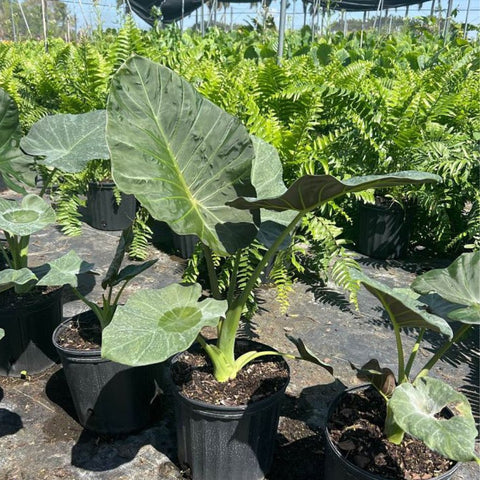Introduction: Embrace a Greener Spring
As the gentleness of spring lures us back to nature, it's essential to reflect on the environmental impact of traditional gardening practices. Did you know that conventional gardening can contribute to water wastage, chemical runoffs, and loss of biodiversity? In a world where sustainability is becoming increasingly crucial, shifting to sustainable gardening is not just a trend but a necessity.
Sustainable gardening provides an alternative method that promotes environmental health, conserves resources, and fosters biodiversity. As we usher in the rejuvenating season of spring, making eco-friendly gardening choices is imperative. These practices enhance our gardens and make substantial contributions to the planet's well-being.

Understanding Sustainable Gardening
A. Definition and Principles
Sustainable gardening refers to practices aimed at reducing gardening's impact on the environment. Its principles include conserving resources, enhancing soil health, minimizing waste, and supporting native biodiversity. By adopting these practices, gardeners can enjoy flourishing gardens while collaborating with nature.
B. Benefits of Sustainable Gardening
The advantages of sustainable gardening extend beyond the garden itself. It helps conserve water, reduce dependency on chemical fertilizers and pesticides, and mitigate the effects of climate change. Additionally, sustainable gardening cultivates healthier soils, supports pollinators such as bees and butterflies, and ensures that garden ecosystems thrive.
Preparing Your Garden for a Sustainable Spring
A. Soil Health Management
1. Composting
Composting is a natural way to enrich soil health. By turning kitchen scraps and garden waste into valuable compost, you create nutrient-rich soil that encourages plant growth and minimizes landfill contributions. Initiate a home compost pile and enrich your garden beds with this organic matter.
2. Mulching
To maintain moisture, suppress weeds, and add nutrients, apply a layer of organic mulch around your plants. Opt for locally sourced materials like wood chips or straw, which promote sustainable practices by minimizing transport impacts.
B. Water Conservation Techniques
1. Rainwater Harvesting
Collect rainwater using barrels to reduce dependence on municipal water supplies. Direct this free and naturally soft resource to your plants, which will thrive with its mineral essence.
2. Drip Irrigation
Implement a drip irrigation system, which efficiently delivers water directly to the plant roots and reduces evaporation. This system ensures that your garden receives the appropriate moisture level without waste.
C. Choosing Native and Drought-Resistant Plants
Native plants are well-adapted to the local climate and require fewer resources to thrive. Notably, consider Plantology's Agave Blue and Agapanthus Lily of the Nile Blue. These species are resilient, water-conserving plants that flourish with minimal care, reducing your garden's environmental footprint.

Sustainable Gardening Practices for Spring
A. Integrated Pest Management (IPM)
Embrace a natural approach to controlling pests through Integrated Pest Management (IPM). This method minimizes chemical usage by attracting beneficial insects and utilizing companion planting to naturally deter pests. Focus on maintaining a balanced ecosystem that supports both plants and predatory insects.
B. Organic Gardening Methods
1. Organic Fertilizers
Switch to organic fertilizers that offer a slow-release of nutrients, enhancing soil microorganisms' activity and plant health. Compost, bone meal, and fish emulsion are excellent choices for nutrient-rich gardens.
2. Natural Pest Deterrents
Utilize plant-based oils and homemade sprays to manage pests naturally. Vinegar, neem oil, and garlic sprouts are traditional solutions that protect your garden's delicate balance.
C. Biodiversity and Pollinators
1. Supporting Pollinators
Promote biodiversity by incorporating a variety of plants that attract pollinators. Plantology's Adonidia Palm Double can be a striking focal point in your garden, providing habitat for bees and butterflies while elevating your garden’s elegance.
2. Planting for Wildlife
Integrating diverse plant species supports local wildlife by providing food and shelter. Herbs, wildflowers, and native shrubs enhance your garden's ecosystem and offer homes for birds and small animals.

Essential Tools for Sustainable Gardening
A. Choosing the Right Tools
Invest in quality, durable tools that will last for years. Look for ergonomic designs that ease strain during long gardening sessions and prioritize tools made from sustainable materials.
B. Maintenance and Care of Gardening Tools
Regularly maintain your tools by cleaning and sharpening them to prolong their lifespan. Proper care reduces the need for replacements and conserves resources.
Designing a Sustainable Spring Garden with Plantology
A. Creating a Garden Layout
A well-designed garden enhances aesthetics and ensures efficient resource use. Consider sunlight, water access, and plant compatibility when planning your layout. Group plants with similar needs together to optimize care.
B. Incorporating Perennials and Evergreens
Introduce perennials and evergreens to your garden to reduce the need for replanting each season. Plantology offers a variety of options, including the Alexander Palm, which remains vibrant throughout the year, offering structure and a lush backdrop for seasonal blooms.
C. Designing Eco-Friendly Pathways and Features
Create paths using permeable materials, such as gravel or wooden chips, to support water infiltration. Designate areas for composting and rainwater collection, integrating them seamlessly into your garden design.

Maintaining Your Sustainable Spring Garden
A. Seasonal Maintenance Tasks
Spring is the time to prepare your garden for summer growth. Engage in tasks such as pruning, planting cover crops, and refreshing mulches to set the stage for healthy development throughout the upcoming months.
B. Monitoring and Adjusting Eco-Friendly Practices
Regularly assess the effectiveness of your sustainable practices. Monitor plant health, observe pest activity, and adapt watering techniques to optimize garden vitality. Being flexible allows you to fine-tune strategies for success.
Conclusion: Commit to a Greener Tomorrow
By adopting sustainable gardening practices, you foster the beauty of spring while contributing positively to the environment. Plantology is here to support your endeavors with a diverse selection of plants that promote sustainable gardening. Explore our offerings such as the Adonidia Palm Single and embark on a journey toward a more sustainable habitat.
Spring signifies new beginnings—seize the opportunity to cultivate a garden that harmonizes with nature. Visit Plantology now to discover how you can enrich your garden this spring while practicing sustainability.
Deep Dive into Soil Health and Management
Ensuring soil health is a cornerstone of sustainable gardening. Healthy soil supports robust plant growth, retains water more efficiently, and contributes to a balanced ecosystem. Here's how you can dive deeper into soil health management techniques that go beyond the basics:
A. Soil Testing
1. Understanding Soil Composition
It all starts with a soil test. By analyzing soil composition, you can determine the pH level and nutrient composition of your garden bed. This crucial step allows you to tailor soil enhancements to specific deficiencies. Soil testing kits are readily available, or your local extension office may offer testing services.
2. Amending Soil Based on Test Results
Once you have tested your soil, amend it with the necessary organic matter. If your soil is too acidic, introduce lime to raise the pH level. Conversely, if your soil is alkaline, use sulfur to lower it. For nutrient deficiencies, incorporate specific amendments like potassium or phosphorus-rich fertilizers.
B. Advanced Composting Techniques
Unlock the full potential of your compost pile by exploring advanced composting methods that accelerate decomposition and maximize nutrient content.
1. Vermicomposting
An innovative technique involves vermicomposting, which uses worms to turn kitchen waste into high-quality compost. Red wigglers are particularly efficient at breaking down organic matter, producing nutrient-rich vermicast that plants love. Set up a vermicomposting bin in your garden or basement to benefit from this eco-friendly practice.
2. Bokashi Composting
Bokashi composting is an anaerobic process that ferments kitchen scraps using a specific inoculant. This method produces pre-compost that can be mixed into soil, speeding up the decomposition process. Bokashi compost can handle food items typically avoided in traditional composting, like meat and dairy.
C. Enhancing Soil Biota
Promoting a thriving community of soil organisms is vital for maintaining soil health. These microorganisms enhance nutrient availability and improve soil structure. Here's how to nourish them:
1. Avoiding Over-Tilling
Tilling can disrupt soil biota and lead to erosion. Aim to minimize tilling or opt for no-till gardening methods, which help maintain soil structure and microbial health.
2. Adding Mycorrhizal Fungi
Mycorrhizal fungi form symbiotic relationships with plant roots, increasing their ability to absorb nutrients and water. Adding these beneficial fungi to your garden can significantly improve plant health and soil quality.

Innovative Water Conservation Strategies
While rainwater harvesting and drip irrigation are excellent starting points, sustainable gardeners can adopt additional strategies to conserve water effectively:
A. Greywater Systems
Explore the use of greywater systems, which recycle water from domestic use (excluding toilets) for irrigation purposes. Properly designed greywater systems can drastically reduce household water consumption, making them a perfect fit for eco-conscious gardeners.
B. Xeriscaping and Water-Wise Plants
Xeriscaping involves designing landscapes to reduce or eliminate the need for irrigation. By selecting drought-tolerant plants and using efficient irrigation layouts, you create a garden that conserves water while remaining beautiful:
- Opt for succulent varieties like Aloe Vera, which retain water in their leaves and thrive in dry conditions.
- Use decorative gravel or stones as mulch, reducing evaporation and providing a sleek aesthetic.
C. Automated Watering Systems
Consider investing in automated watering systems with timers and moisture sensors, which ensure that your garden receives just the right amount of water, eliminating waste due to human error. Smart irrigation systems can even adapt to weather changes, reducing watering during rainy periods.

Expanding Your Knowledge with Companion Planting
Companion planting leverages plant relationships to enhance growth, repel pests, and maximize space. Dive deeper into its principles and explore plant combinations that bring mutual benefits:
A. Guild Planting
Adopt guild planting, a permaculture concept that organizes plants into beneficial groups. Guilds typically include a central plant, support plants, and protectors.
B. Beneficial Plant Partnerships
- Plant marigolds alongside tomatoes to deter nematodes and improve overall plant health.
- Pair basil with peppers or tomatoes; the herb enhances their flavor and repels unwanted insects like flies and mosquitoes.
These strategic planting arrangements reduce pests and enhance growth, creating a harmonious garden environment.

Creating Habitats for Wildlife
Our gardens should be havens not just for plants but also for the local wildlife. Incorporating habitats that cater to various species can transform your garden into a biodiversity hotspot:
A. Birdhouses and Feeders
Attract diverse bird species by installing birdhouses and feeders. Seeds, fruit, and suet cakes can offer sustenance and bring a symphony of songbirds to your garden.
B. Ponds and Water Features
Water features like ponds not only enhance garden aesthetics but also support amphibians, insects, and birds. Consider adding a pond with native aquatic plants to provide habitat, and integrate a gently bubbling fountain to attract even more wildlife while adding tranquil sounds to your space.
C. Insect Hotels
Create insect hotels using bamboo canes and wooden slats to provide nesting opportunities for solitary bees and other beneficial insects. These handmade structures promote biodiversity and improve pollination rates in your garden.
Advanced Organic Gardening Practices
Organic gardening extends beyond basic techniques to include advanced practices that integrate the latest ecological advancements:
A. Crop Rotation
Crop rotation involves changing the location of plant families each year to disrupt pest cycles and improve soil fertility. Swap where you planted your nightshades with legumes the following year, as legumes fix nitrogen in the soil, benefitting subsequent crops.
B. Dynamic Accumulators
Incorporate dynamic accumulator plants such as comfrey and nettle, which draw nutrients from deep within the soil to their leaves. Mulching these plants or making tea can replenish soil nutrients naturally.

Engaging with Community and Education
Finally, sustainable gardening thrives on community support and continued education. Here's how to build strong connections:
A. Join Gardening Communities
Joining local gardening groups or online communities can provide insights into best practices and troubleshoot issues. Sharing knowledge with fellow gardeners often leads to discovering new challenges and solutions.
B. Participate in Workshops and Courses
Expand your knowledge through workshops and courses that cover advanced sustainable gardening topics. Organizations like local garden clubs or botanical gardens often host invaluable educational events.
C. Advocate for Community Gardens
Champion community garden initiatives, which increase green space access and encourage people to engage in sustainable gardening. These gardens foster community, provide fresh produce, and offer educational opportunities.
Caring for Future Gardeners
Lastly, pass along the torch by teaching younger generations the importance of sustainable gardening:
A. Gardening with Children
Involve children in the gardening process by explaining the life cycle of plants, the importance of soil health, and the magic of seeing food grow. Encourage them with child-friendly projects like growing sunflowers or creating a small fairy garden.
B. Educating Through Schools
Support gardening programs in schools to instill a love for plants and the environment. These programs can teach children vital skills and promote healthy eating habits through hands-on learning experiences.

Conclusion: A Commitment Toward Lasting Change
Every step toward sustainable gardening contributes to a healthier planet. As you embark on or continue this journey, remember that every effort counts. Cultivating a garden that honors nature ensures the legacy of beauty and sustenance continues for future generations.
Let's commit to sustainable gardening practices that respect the land and cherish its inhabitants. Together, with resources such as Plantology, we can cultivate greener, more abundant spaces all around the globe. Discover how you can be a part of this movement by starting with your own patch of earth this spring and beyond.






























Comments (0)
There are no comments for this article. Be the first one to leave a message!